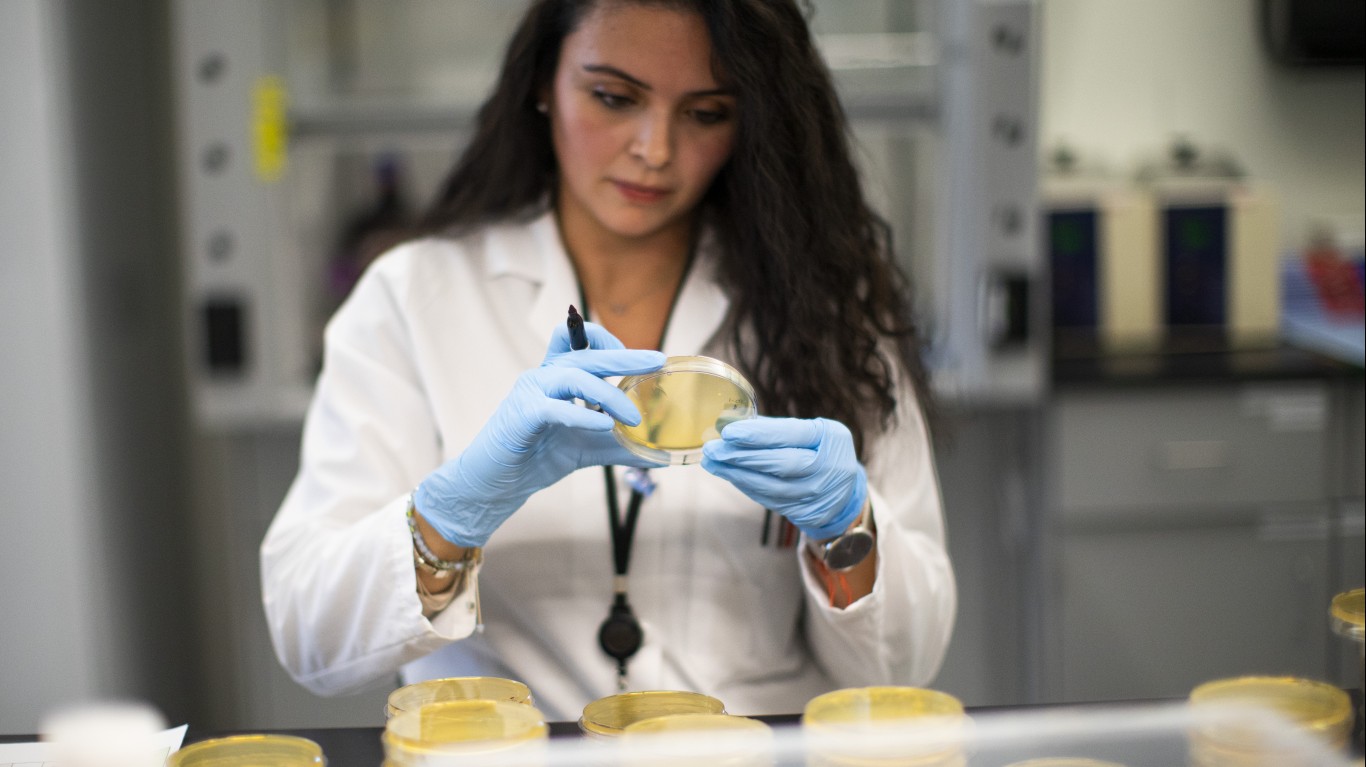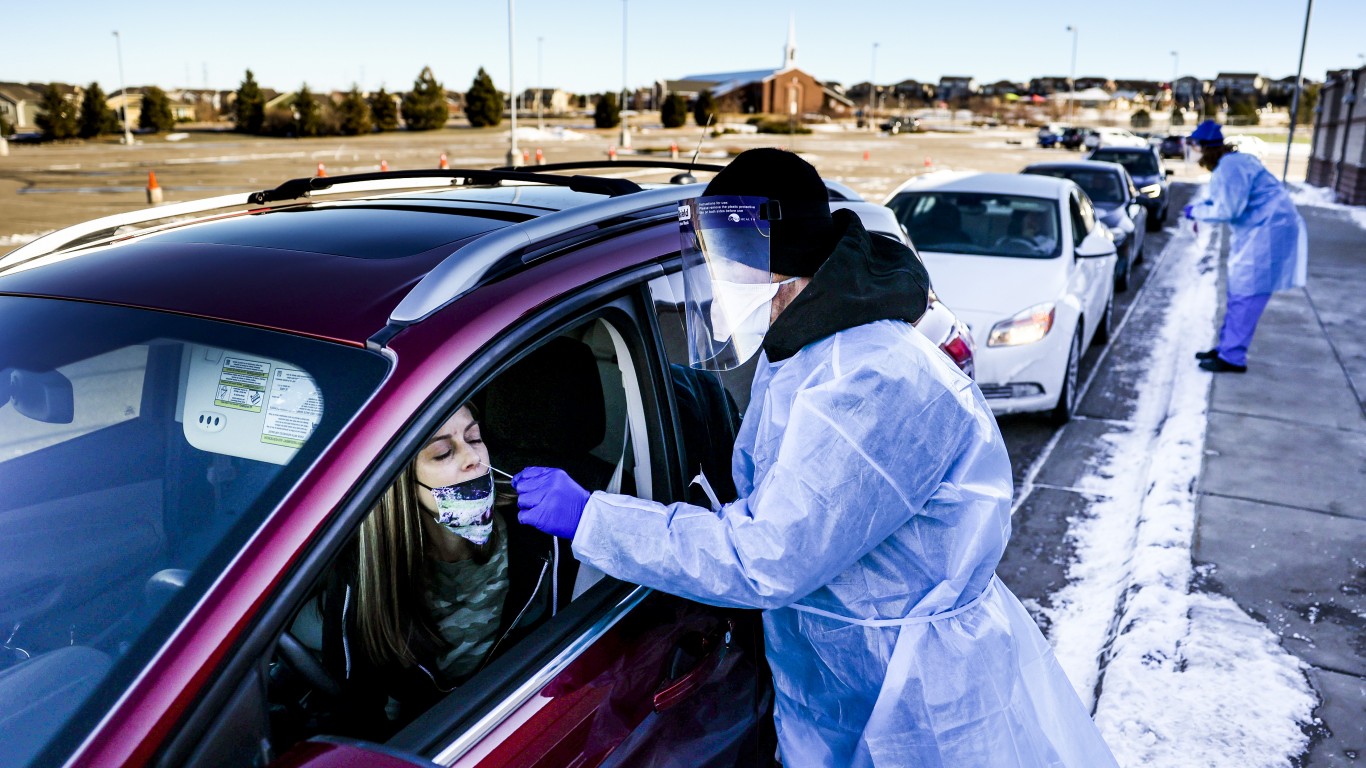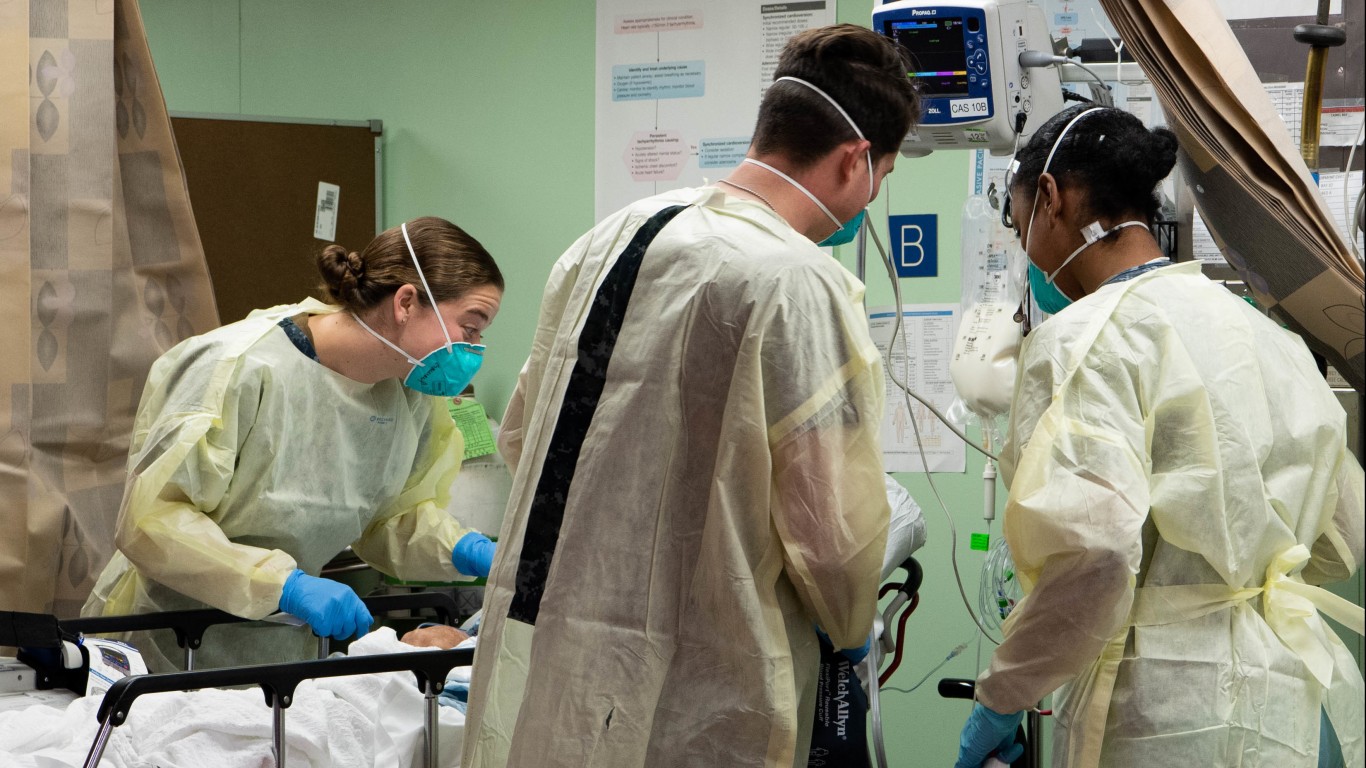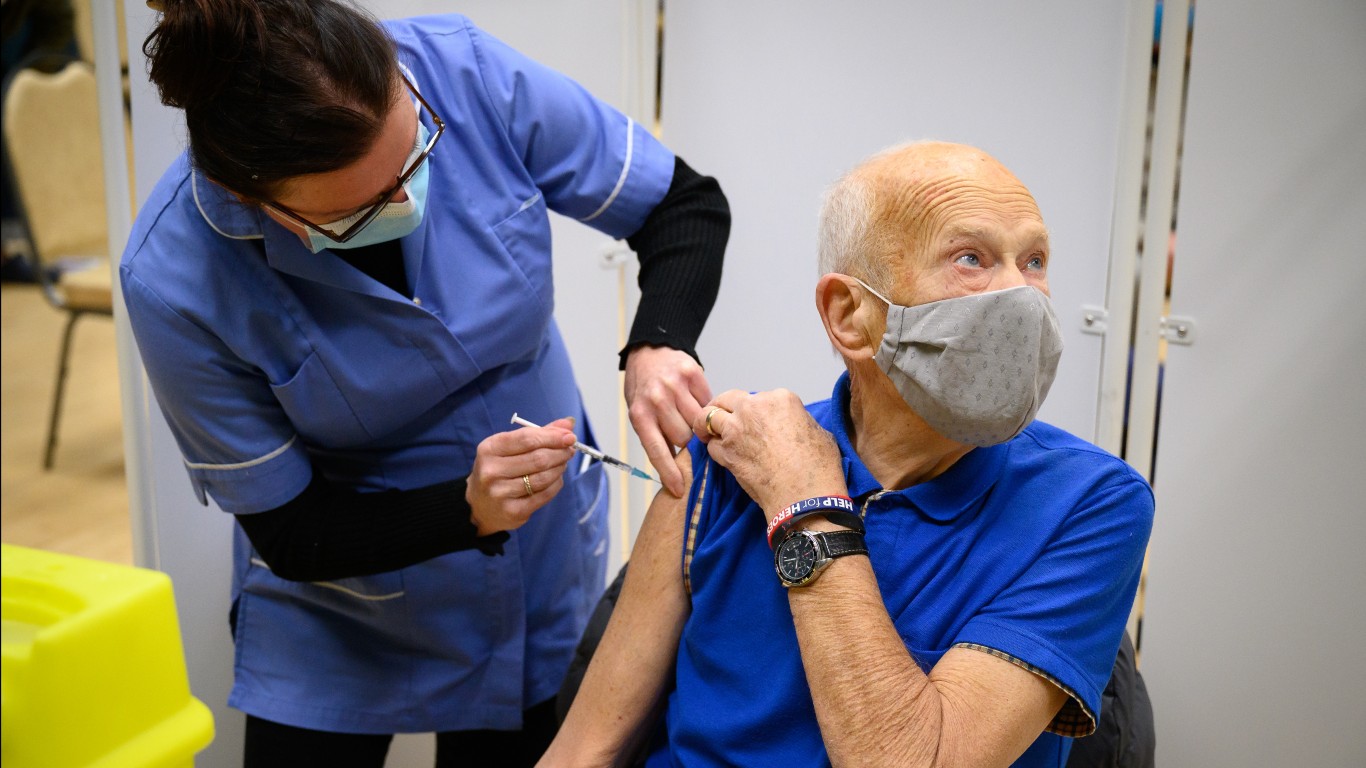
This post may contain links from our sponsors and affiliates, and Flywheel Publishing may receive
compensation for actions taken through them.
The pace at which COVID-19 is spreading across America has decreased. Fatalities from the disease in the U.S. may stand at 519,014 (current, these should always be updated before publication–today is 531,398) — about 20% of the world’s total — to date, but new deaths per day reported here have dropped below 2,000, about half what they were seven weeks ago.
Effective vaccines have probably been a major factor in the decline. However, the pace of vaccinations around the country is proceeding slowly, particularly compared with that in the nations that have performed the best: Israel, the United Arab Emirates, and the United Kingdom. Currently about 18% of the adult population in America has received at least one dose of the vaccine. Less than 10% have received two shots. (Of the 116,378,615 vaccine doses that have been distributed to date, 92,089,852 have been administered.)
Variants are the wildcard. The most widely followed ones were first detected in the United Kingdom, Brazil, and South Africa. Recently the Centers for Disease Control and Prevention (CDC) has said that one of these now makes up 20% (updated) of new U.S. cases, and the numbers are surging.
Click here to see what the new COVID-19 variants mean to us

What are the three primary variants?
The CDC currently tracks three variants of the coronavirus. These are identified as variants B.1.1.7, B.1.351, and P.1. The first of these, B.1.1.7, has spread to 49 states, with the majority of occurrences recorded in Florida, Michigan, New York, and California.
[in-text-ad]

Are there only three variants?
No. The main variants tracked by the CDC tracks are not the only ones that have been discovered. Some new ones are home grown. According to the LA Times, one variant started in New York State and one in California. One way to lessen risks is through the creation of COVID-19-free zones.

Which variant worries public health officials the most?
Cases in the United States have started to rise again, and there is worry about another surge. The technology site Ars Technica reports that “The reversing trend may in part be due to the B.1.1.7 coronavirus variant, first identified in the UK and thought to be about 40 percent to 50 percent more infectious than earlier SARS-CoV-2 viruses.” It could represent 10% of cases countrywide, up by a factor of five to 10 in a few short weeks.

What concerns Dr. Fauci right now?
While the number of total COVID-19 cases has dropped, that decline has slowed and may even have reversed in the past several days. According to Dr. Anthony Fauci, director of the U.S. National Institute of Allergy and Infectious Diseases and the chief medical advisor to President Biden, “If we plateau at 70,000, we are at that very precarious position that we were right before the fall surge, where anything that could perturb that could give us another surge.” Variants make our position more precarious.
[in-text-ad-2]

Are vaccines effective against the variants?
One open question is whether the three vaccines used in the United States are as effective against the new variants as they are with the original version of the coronavirus. Opinions are mixed. The BBC recently reported that “Scientists believe current vaccines do offer protection against variants as well.” However, this thesis has not been conclusively tested, particularly because some variants are relatively new. Another problem is that, even if the vaccines are effective, not everybody wants to get vaccinated. These are the states where the most people are refusing vaccines.

What else can we do to protect ourselves from the new variants?
Lost in much of the conversation over distribution of the vaccines, the appearance of new variants, and the pace at which the country should be reopened are the three rules that have been in place since early last year: Wear a mask in public, two if possible. Wash your hands frequently. And maintain a social distance of at least six feet, or the equivalent of your arm span.
Take This Retirement Quiz To Get Matched With An Advisor Now (Sponsored)
Are you ready for retirement? Planning for retirement can be overwhelming, that’s why it could be a good idea to speak to a fiduciary financial advisor about your goals today.
Start by taking this retirement quiz right here from SmartAsset that will match you with up to 3 financial advisors that serve your area and beyond in 5 minutes. Smart Asset is now matching over 50,000 people a month.
Click here now to get started.
Thank you for reading! Have some feedback for us?
Contact the 24/7 Wall St. editorial team.
 24/7 Wall St.
24/7 Wall St.
